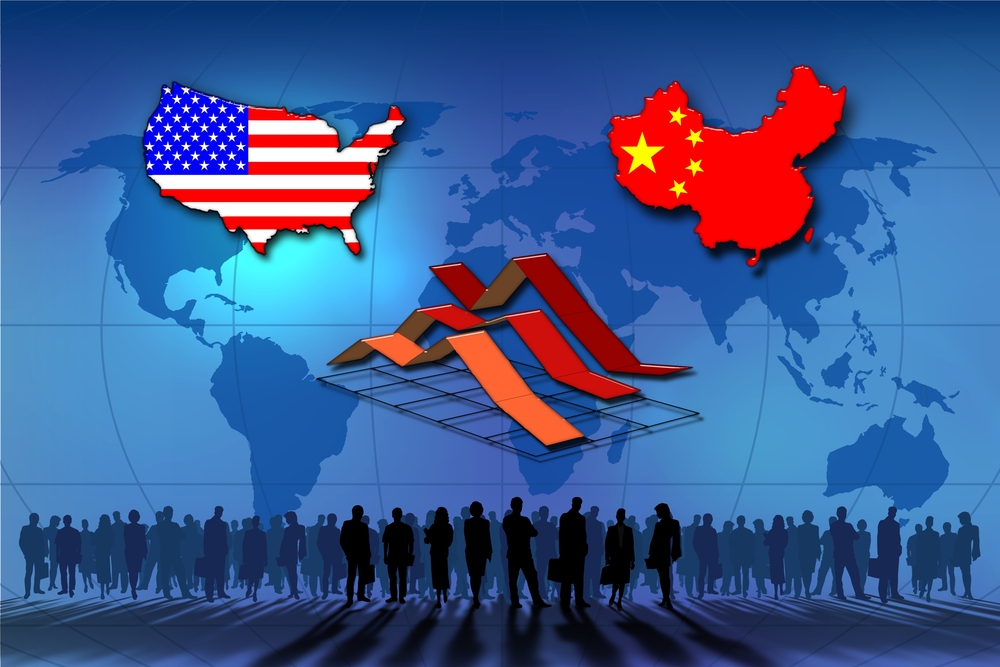Can the U.S. and China Achieve Mutually Assured Prosperity?

Please note that we are not authorised to provide any investment advice. The content on this page is for information purposes only.
After years of talks, negotiators concluded an agreement on the US-led Trans-Pacific Partnership (TPP) in October 2015. Since China is excluded from the TPP, one would expect antagonism rather than symbiosis between the Washington-advocated trade package and Beijing’s One Belt, One Road (OBOR) strategy. However, closer scrutiny suggests that the TPP and OBOR may be converging by design and destiny.
After years of talks, negotiators concluded an agreement on the US-led Trans-Pacific Partnership (TPP) in October 2015. Since China is excluded from the TPP, one would expect antagonism rather than symbiosis between the Washington-advocated trade package and Beijing’s One Belt, One Road (OBOR) strategy. However, closer scrutiny suggests that the TPP and OBOR may be converging by design and destiny.
The TPP is widely known as a trade initiative led by the United States, but Washington was actually a latecomer to the crafting of a new economic architecture for the Asia Pacific. The first negotiation milestone was the Trans-Pacific Strategic Economic Partnership agreement, signed by Brunei, Chile, New Zealand and Singapore in 2005. The United States joined the talks in 2009 and the TPP came to be an essential element of the Obama administration’s ‘Asia Pivot’.
After Washington took the wheel, the negotiations expanded to include Australia, Canada, Japan, Malaysia, Mexico, Peru, South Korea and Vietnam. The result was an extensive trade package that seeks to regulate internet freedom, tariffs, intellectual property rights, labour and environmental provisions, among other areas. The deal has faced relentless criticism from environmental and labour groups, and has been condemned for its secrecy. Within the United States, the TPP eventually lost the support of former secretary of state, and Democratic presidential candidate, Hillary Clinton and getting it to pass through Capitol Hill will be an uphill battle.
How the TPP will unfold has significant repercussions for Sino–American relations. US President Barack Obama has labelled it the key factor in deciding whether Beijing or Washington will shape the future of the Asia Pacific region.
China has a grandiose initiative of its own, the OBOR plan, which aims to integrate Asia, Africa and Europe through deepened diplomatic, commercial and financial cooperation, as well as improved infrastructural development for ‘global connectivity’. The proposal is predicted to encompass territory with a total population of more than 4 billion people, as well as nearly one-third of global GDP. It will be financed through monetary juggernauts such as the New Silk Road Fund and the Asian Infrastructure Investment Bank (AIIB).
The OBOR could easily be seen as a rival agenda to the US’ Asia Pivot strategy, in which the TPP plays a central role. Despite repeated requests from the Obama White House not to join the AIIB, many of the US’ closest allies have signed on, signalling the gravity of Beijing’s global power.
However, the two initiatives may be more prone to cooperation than competition.
Although China is excluded from the TPP at the moment, Beijing’s bilateral economic agenda shows striking convergence with the US-led trade package. Beijing has signed bilateral investment treaties with several TPP members, including Australia and South Korea, and there are on-going trade negotiations with Japan. A US–China bilateral investment treaty is also in the making, while the forward-looking, newly established Shanghai Free Trade Zone attempts to make the Hong Kong financial district history.
From a strictly commercial point of view, China’s entrance into the TPP would be an act with mutual benefits. Beijing would significantly increase the gains of the TPP through technology proliferation while also providing advantages in the US market for Chinese exports and investment opportunities. This could be a decisive factor in favour of cooperation if both China and the US choose to prioritise commerce above political complications.
Certainly, the history of hegemonic shifts in international relations projects gloomy times ahead for Sino–American relations. It would be naive to expect China and the United States to avoid collision out of pure benevolence. Yet it may not be inherently conflictual for the two countries to act according to their self-interest, if these interests lie in economic growth. If we add the growth of commercial bonds between the United States and China to the international trade puzzle, it becomes plausible that political ideologies will be trumped in favour of commercial prosperity.
Given the commercial interdependence of China and the United States, and their national commitments to economic growth, the TPP and OBOR are likely to be drawn under a common scheme for mutually assured prosperity. In such a scheme, cooperative growth will matter more than the political ideologies of the past.
When the TPP and One Belt, One Road meet is republished with permission from East Asia Forum




